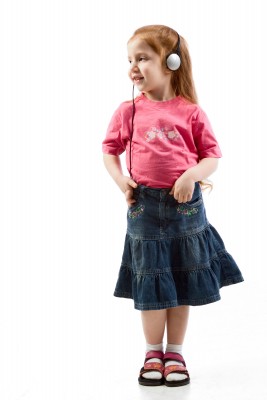 Autism Speaks, the world’s leading autism science and advocacy organization, recently awarded CHIP Principal Investigator (PI) Anjana Bhat a grant to develop and evaluate the effectiveness of a novel music-based intervention for children with autism.
Autism Speaks, the world’s leading autism science and advocacy organization, recently awarded CHIP Principal Investigator (PI) Anjana Bhat a grant to develop and evaluate the effectiveness of a novel music-based intervention for children with autism.
Dr. Bhat, an assistant professor of kinesiology in UConn’s Neag School of Education and a pediatric physical therapist, will use the two-year, $120,000 pilot treatment grant to design and test an intervention to improve the motor, social, and communication skills of low- to moderate-functioning children with autism between the ages of 3 and 14.
The grant is especially significant because there is little to no evidence on the effectiveness of music-based interventions for children with autism, despite the growing popularity of such interventions in recent years, Dr. Bhat said. Additionally, none of the existing music-based interventions for children with autism incorporate movement activities, which are often impaired, and none of the music interventions are offered more than once or twice a week, which is not often enough for this population to truly benefit, she said.
“Children with autism have great difficulty coordinating complex movements such as planning to dress or tie their shoe laces or dribble a ball due to the abnormalities affecting long-range communication between brain areas,” Dr. Bhat explained. “Movement-based activities within the music-based intervention address these difficulties.”
Most children with autism enjoy music, Dr. Bhat said. In fact, two of Dr. Bhat’s colleagues in autism research at UConn, Board of Trustees Distinguished Professor of Psychology Deborah Fein and Associate Professor of Psychology Inge-Marie Eigsti, have documented that children with autism have enhanced musical abilities, such as pitch perception.
“Embedding an intervention in a music class should make it more appealing to children with autism,” Dr. Bhat said. “We will be addressing impairments of a child with autism within a non-intimidating, enjoyable context.”
The intervention, which Dr. Bhat is developing in collaboration with Associate Professor of Music Education Linda Neelly, will include a hello song, beat keeping activities, music making with different instruments, whole body movements, such as marching, and a calming, farewell song.
The study will involve 24 children with autism, half of whom will receive the music-based movement intervention and half of whom will be assigned to a control group.
Children in the intervention arm will attend two sessions a week led by an expert trainer in a classroom setting and three sessions a week led by a parent or caregiver at home.
“Having the parents supplement the intervention at home will enhance its likelihood of success, because children with autism need repeated practice to master new skills,” Dr. Bhat said.
Parents will receive a training manual and a CD with all of the songs to use at home. They will keep diaries tracking the sessions they conduct at home and will be required to conduct at least 75 percent of the recommended sessions to participate in the study, Dr. Bhat explained.
Dr. Bhat’s team will match the level of parent training (and other factors, including the severity of the disorder and other therapies being received) when comparing results. The research team also will video tape some of the parent-led sessions and evaluate for fidelity of the training protocol. For instance, researchers will look for parents to make a certain number of bids for social interaction per session.
Twenty families with children with autism already have been recruited to participate in the study, Dr. Bhat said, and the parents are very motivated to participate because they believe their children will enjoy and respond to this type of intervention.
The intervention includes 40 sessions total and takes 8 weeks. Pre-test measures the first week and post-test measures the final week will include standardized tests of participants’ Joint Attention (JA), turn taking, imitation, praxis, coordination, and balance. The research team will obtain video data during pre- and post-test of synchrony during walking, marching, clapping, and drumming motions, and the researchers also will use eye tracking equipment – bands on participating children’s foreheads that record to backpacks with camcorders in them – to show the focus of the participants’ attention.
Dr. Bhat expects children in the intervention arm will demonstrate improved social performance, such as rates of JA bids, rates of turn taking, and duration of verbalization, as well as improved motor performance, such as rhythmic action praxis, motor coordination, and movement synchrony with the other participants.
“Music-based interventions for children with autism are being used but, due to lack of evidence for their effectiveness, they are still not considered within the standard of care and they are not typically covered by insurance,” Dr. Bhat said. “We are hoping to develop and document an effective music-based movement intervention and ultimately bring it into the mainstream so that it is made more readily available to children with autism who could benefit from them.”
 Facebook
Facebook
 Twitter
Twitter
 LinkedIn
LinkedIn
